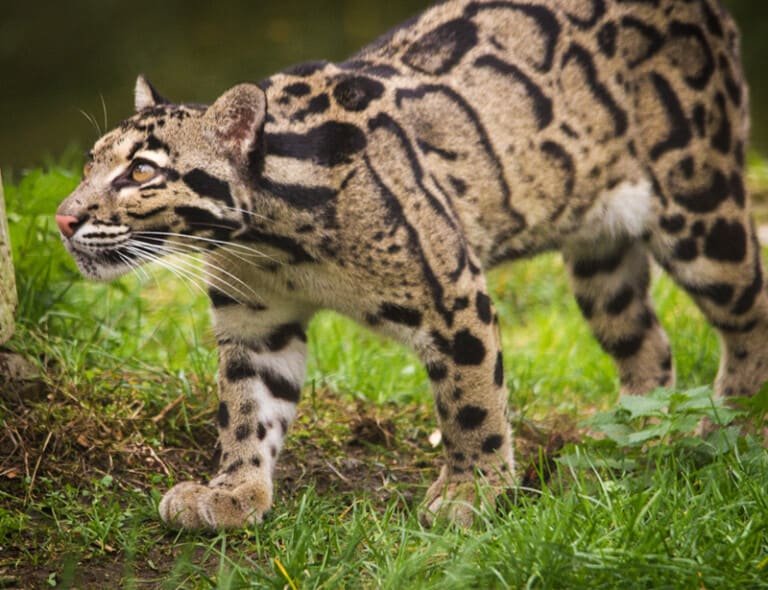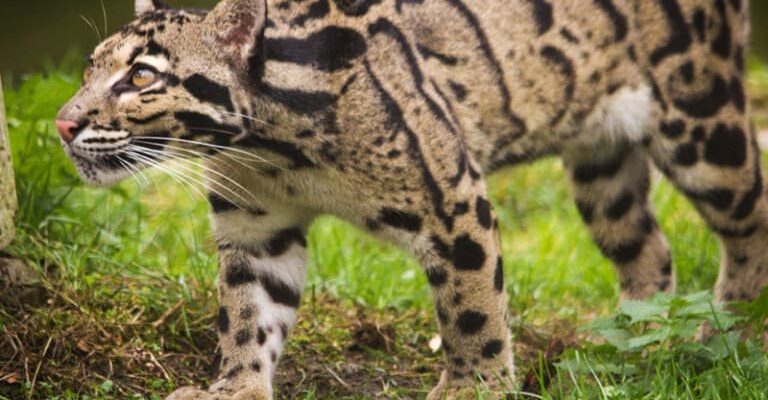
In this article, we’ll dive into some animals that share similarities with the clouded leopard, from their appearance to their habitats. Understanding how to tell them apart can be quite the adventure, almost like a wildlife detective story. So grab your coffee, and let’s explore the enchanting world of wild cats and their close relatives.
1. Leopard
When you picture a leopard, you might think of Africa’s savannas, where these big cats roam. Though leopards and clouded leopards share a common ancestor, their differences are striking. Leopards have a more robust build and are known for their iconic rosettes—those circular spots that look like flower petals. Clouded leopards, on the other hand, showcase a more slender frame and larger facial features, giving them a more delicate appearance.
In terms of habitat, leopards can be found across various terrains, from grasslands to forests. They’re incredible climbers and often stash their kills in trees. Clouded leopards prefer tropical and subtropical forests in Southeast Asia, where their cloud-like spots help them blend into the dappled light filtering through the trees.
2. Snow Leopard
If you’ve ever looked at a snow leopard, you might think you’ve stumbled upon a clouded leopard that’s been transformed for winter. These majestic cats share a similar build and coat pattern but are distinctly adapted to cold, high-altitude landscapes. Snow leopards have thick fur and large paws that act as natural snowshoes, allowing them to traverse rocky mountain terrains with grace.
In terms of coloring, snow leopards are generally lighter, featuring smoky-gray and white fur with black rosettes. This helps them camouflage against rocky terrains and snow. Unlike clouded leopards, who enjoy humid forests, snow leopards thrive in the mountainous regions of Central and South Asia, including the Himalayas.
3. Asian Golden Cat
The Asian golden cat is another feline that’s often compared to the clouded leopard due to its similar silhouette and size. These cats have a more uniform coat that ranges from golden to reddish-brown, but the patterns can vary, sometimes resembling faint spots. They lack the dramatic cloud-like markings, but their slender, agile bodies make them excellent hunters.
The Asian golden cat can be found throughout Southeast Asia in forest habitats. One fascinating thing about them is their adaptability—they can thrive in both dense jungles and more open landscapes. They’re not as well-known as their larger relatives, but they share the same stealthy hunting style.
4. Ocelot
When it comes to small wild cats, the ocelot stands out with its striking appearance. With a coat that features a mix of spots and stripes, ocelots share that wild beauty common to both ocelots and clouded leopards. Although ocelots are significantly smaller, they possess a similar graceful build, making them agile hunters in their own right.
Native to the Americas, ocelots prefer dense vegetation, where they can stalk their prey—usually small mammals and birds. Interestingly, even though they operate in different parts of the world, both ocelots and clouded leopards share a love for tree climbing, thanks to their agile limbs and keen claws.
5. Margay
The margay is often likened to a miniature ocelot but has a distinct personality and hunting style. They’re known for their exceptional tree-climbing abilities. Their long legs and flexible bodies allow them to move easily through the branches, similar to how clouded leopards navigate their arboreal homes.
Margays have a coat patterned with beautiful spots and stripes, just like their larger counterparts. However, their smaller size and unique adaptations make them a separate species. They’re mostly found in Central and South America, thriving in rainforests where their stealth and agility are crucial for hunting small birds and mammals.
6. Serval
Next up is the serval, a medium-sized cat that’s often found in African savannas. While they differ from clouded leopards in many ways, the serval does have a certain charm to its spotted fur and long legs. They have large ears that help them detect sounds over long distances, making it easier to locate prey hidden in the tall grass.
Unlike clouded leopards that prefer forested areas, servals thrive in open terrains where they can use their remarkable jumping ability to catch birds and rodents. Their distinct appearance and behavior make them a fascinating study alongside clouded leopards, showcasing how diverse the cat family can be.
7. Pallas’s Cat
Ever heard of Pallas’s cat, also known as the manul? These little felines might not look much like clouded leopards at first glance, but they share a similar charm. With their flat faces and fluffy coats, Pallas’s cats are like the wild cats of the steppes. They have a dense coat that helps them thrive in cold environments, similar to how clouded leopards adapt to their forest habitats.
Pallas’s cats are native to Central Asia and are known for their unique, squished faces and nocturnal habits. They’re masters of camouflage in the rocky landscapes they inhabit, giving them a strategic edge when it comes to hunting. While they are quite different in size and habitat compared to clouded leopards, the two species still share a connection as captivating wild felines.
8. Caracal
The caracal is another fascinating wild cat that somewhat resembles the clouded leopard. Though caracals are more robust and have distinct tufted ears, their coat can have similar tones, giving them a sleek look. Caracals are known for their incredible jumping ability, often leaping high into the air to catch birds mid-flight.
These cats inhabit a variety of environments, from savannas to mountainous regions, and are most often found in Africa and parts of the Middle East. Their adaptability and hunting skills make them a compelling study alongside clouded leopards, highlighting the diverse traits found in the feline family.
9. Fishing Cat
The fishing cat might not look much like the clouded leopard at first, but their love for water sets them apart in an interesting way. While clouded leopards are primarily tree dwellers, fishing cats thrive along wetlands, rivers, and marshes in South and Southeast Asia. They have a stocky build and a coat patterned with spots and stripes that help them blend into their watery habitats.
As their name suggests, fishing cats are exceptional swimmers and often hunt for fish, which makes them a unique member of the wild cat family. The adaptability between clouded leopards and fishing cats shows just how versatile nature can be, with each species carving out its niche in the ecosystem.
10. Cheetah
Finally, we have the cheetah, which is quite different from the clouded leopard in many aspects but still worth mentioning. Known as the fastest land animal, cheetahs have a streamlined build and distinct black tear stripes on their face that help reduce glare. While clouded leopards excel in climbing trees and navigating dense forests, cheetahs are built for speed and open plains.
Cheetahs typically inhabit savannas and grasslands in Africa, hunting with incredible speed and precision. While both species share feline traits, the cheetah’s adaptations highlight the diverse ways cats can survive and thrive in different environments.
Now that we’ve explored these ten animals similar to the clouded leopard, you can see just how rich and varied the feline family can be. Each of these cats offers a unique glimpse into the adaptations and beauty of nature. From the robust leopard to the agile ocelot, every species brings its own set of skills and characteristics to the jungle, savanna, or snowy peaks where they live.
Understanding these animals not only enhances our appreciation for wildlife but also highlights the importance of conservation efforts to protect their habitats. So the next time you think about the clouded leopard, remember the fascinating relatives it has in the wild. Each one adds a chapter to the incredible story of evolution and survival in the animal kingdom.

